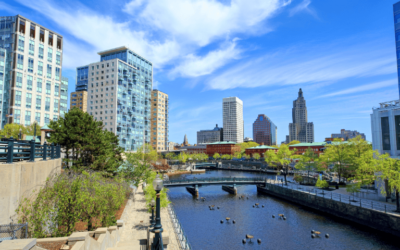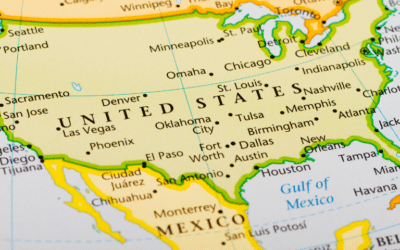Sustainability is a growing trend for businesses and corporations. Not only does it create a positive impact on the environment, but companies can also use it to improve their brand image and attract new talent or investors. Creating an energy strategy is one of the first steps a company will take to implement green measures into their business. Energy strategies offer a starting point to achieve their goals, such as cutting operational costs or minimizing their carbon footprints. But what exactly is an energy strategy, and how do you create one that aligns with your long-term goals?
What is an Energy Strategy?
Energy strategies are comprehensive plans on how a business plans on lowering their energy consumption. This will outline the steps they are taking to manage, reduce, and optimize their usage. This could involve large scale projects like retrofitting HVAC or lighting, or smaller scale like setting a schedule for the thermostat.
Why Is an Energy Strategy Important?
- Cost Projections and Savings: The most common reason for energy strategies is the potential for cost savings. Creating a thorough plan helps companies conserve and optimize energy usage, therefore lowering utility bills. The finances used on energy-efficiency projects, like retrofits, lead to a long-term investment from the energy being saved over time.
- Environmental Impact and ESG Performance: ESG (Environmental Social Governance) is a score that measures a company’s commitment to the environment and the impact it is making. When a business creates an energy strategy, it has a strong impact on their ESG score once the plan is in action. Projects like solar panels or lighting retrofits has an environmental impact and lowers carbon footprints.
- Access to Better Energy Rates: Energy strategies put companies in a better position to negotiate energy rates. By reducing peak demand energy usage, a business can qualify for lower utility rates.
Any business planning an energy efficiency project should also review the available commercial incentives and rebates in their area. You could find that HVAC rebates are extremely high right now and that they offer better financial returns than a lighting upgrade. Know your options before planning your 2025 energy efficiency projects. To learn what commercial incentives and rebates are in your area, schedule a call with one of our experts today!
Tips for Developing Your Business Energy Strategy
Now that you understand the benefits, how do you go about creating a sustainable energy strategy for 2025 and beyond? Here are some essential steps to get you started:
Step 1: Conduct an Energy Audit
To understand your energy usage, you need to start with an energy audit to measure how and where the most amount of energy is being used. Energy audits provide thorough evaluations of where energy is being used the most. They will evaluate HVAC, lighting, building controls and anything else that runs on electricity or gas. Conducting these audits will help gain a clear picture about the building’s energy performance and identify areas for improvement.
This can be conducted internally or by hiring a professional through your local utility company. Although a professional audit will be more thorough. Energy audits are the starting point to your energy strategy so you can prioritize what areas need the most attention to gain the most cost and energy savings.
Step 2: Analyze Utility Bills
Utility bills hold a lot of information about energy usage. Understanding how energy usage translates to cost is the key to identifying ways to increase savings. If systems begin failing or need maintenance, they will begin consuming more energy, as a result this will show in higher energy bills. You can also identify any errors and other ways to save, like operating certain machinery during off-peak demand hours.
A detailed analysis of your energy use can also reveal patterns, such as seasonal spikes in energy demand, that can inform decisions on when and how to implement energy-saving measures.
Step 3: Implement Energy Model
Once you finish analyzing the data from your audit and utility bills, you need to create a gameplan for strategy. Energy modeling allows property and business owners to simulate the effects of your strategy, like retrofitting, installing smart controls or repairing existing systems like HVAC.
Using an energy model helps you make an informed decision about what steps to take for the energy strategy. It gives the opportunity to visualize return on investment and prioritize the energy projects you’re taking on.
Step 4: Set Energy Milestones and Goals
Once the energy model is complete, businesses will begin setting milestones. Making clear milestones includes prioritizing projects and setting energy goals. For example, some businesses complete simpler upgrades before more extensive ones. This could be replacing lighting to LEDs before retrofitting the HVAC systems.
Final Thoughts
Developing an energy strategy is key to improving ESG scores and framing your business as energy efficient. Plus, it helps keep costs down and reduces energy consumption. Creating a roadmap for your business helps keep your business on track and to be in alliance with your goals.
Financial rebates are available in every state and through local utility companies to lower the costs of energy projects. Incentive Rebate360 offers rebate management services to help you find the right financial rebates to suit your energy goals. To speak with our experts about qualifying for financial incentives, contact us today by calling 480-653-8180, emailing [email protected], or scheduling a call that fits your needs by clicking the button below!






0 Comments